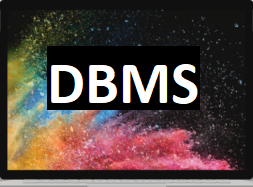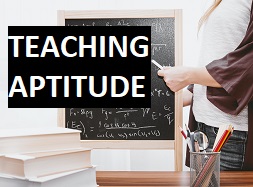
1.Which type of evaluation focusses on the identification of deficiencies and difficulties of the learner?
(1) Summative evaluation
(2)Follow up evaluation
(3) Diagnostic evaluation
(4) Criterion-referenced evaluation
Ans: 2. Diagnostic evaluation
2.A hypothesis is
(1) A certain and established finding
(2)A part of the research question
(3) A strategy of evaluating data
(4)A tentative statement providing an explanation
Ans: (4)A tentative statement providing an explanation
3.Which of the following is the key behavior contributing to effective teaching?
(1) Summarizing what was told by a student
(2) Encouraging students to elaborate on an answer
(3) Using direct and indirect questioning
(4)Explaining concepts in a logical step by step presentation
Ans: (4)Explaining concepts in a logical step by step presentation
4.What are the elements of evaluation plan?
(a) Purpose (b) Resources
(c)Analysis (d) Authority
Select the correct answer from the options given below:
(1) (a) and (c)
(2) (b) only
(3) (b), (c) and (d)
(4) (a), (b) and (c)
Ans: (4) (a), (b) and (c)
5.Tertiary source of data is
(1) Films, hoardings and posters
(2)Government gazette, newspapers and magazines
(3) Information derived from both primary and secondary sources (4) Data collected from policy papers
Ans: (3) Information derived from both primary and secondary sources
6.Position papers are
(1) Compiling of academic articles
(2)Providing review articles
(3) Offering a synopsis of an extended research
(4)Highlighting of issues and depiction of status
Ans: (4)Highlighting of issues and depiction of status
7.From the following list identify the qualitative research characteristics and select your answer from the codes given below:
(i) Creating purpose statements and research questions
(ii) Stating the purpose and research questions in a broad way
(iii) Collecting data based on words from a small number of individuals
(iv) Collecting numeric data and statistical analysis (v) Using text analysis and interpreting larger meanings of the findings
Code:
(1) (ii), (iii) and (v)
(2) (i), (ii) and (iii)
(3) (i), (ii) and (iv)
(4)(i), (iii) and (v)
ans: (1) (ii), (iii) and (v)
8.Instructions which encourage live participation and interaction through online classes are called
(1) Synchronous instructions
(2) Asynchronous instructions
(3)Traditional instructions
(4) Theoretical instructions
ans: (1) Synchronous instructions
9.Which of the following is an example of higher order of cognitive learning outcome?
(1) Learning of facts and their sequences
(2) Learning roles and action sequences
(3) Learning of concepts and abstractions
(4)Learning of awareness and valuing
ans: (3) Learning of concepts and abstractions
10.Case studies are
(1) Studies conducted in areas of genetics and microbiology
(2) In-depth examination of a subject and its related conditions
(3) A report on the existing sociopolitical condition
(4)Specialized research in the areas of health and sanitation
ans: (2) In-depth examination of a subject and its related conditions
11.Given below are two premises with four conclusions drawn from them. Which of the following conclusions could be validly drawn from the premises?
Premises:
(i) All cats are dogs
(ii) All dogs are cows
Conclusions:
(a) All cats are cows
(b) Some cows are cats
(c) All dogs are cats
(d) No cow is dog
Select the correct answer from the options given below:
(1) (b), (c) and (d)
(2) (d) only
(3) (a) and (b)
(4) (b) and (d)
Ans: (3) (a) and (b)
12.Communication through colors can result in
(a) Aesthetic codes (b) Cultural codes
(c) Semantic codes (d) Binary codes
Choose the correct answer from the options given below:
(1) (a) and (d)
(2) (b) and (c)
(3)(b) and (d)
(4) (a) and (b)
ans: (4) (a) and (b)
13.In a bag, there are coins of 5 ps, 10 ps and 25 ps in the ratio of 3:2:1. If there are Rs. 60 in all, how many 5 ps coins are there?
(1) 100 (2) 200 (3) 300 (4) 400
ans: (3) 300
14.If proposition some milk is curd is taken to be true then which of the following propositions can be false?
(1) No milk is curd
(2) All milk is curd
(3)Some curd is milk
(4) Some milk is not curd
ans: (1) No milk is curd
15.Choose the missing term out of the given alternatives : QPO, NML, KJI,__
(1) HGF (2) CAB (3) JKL (4) GHI
ans: (1) HGF
16.The proposition some trees are green is equivalent to which of the following propositions?
(a) Many trees are green
(b)Some green things are trees
(c)Some green things are not non-trees
(d)Trees are usually green
Select the correct answer from the options given below:
(1)(a), (b), (c) and (d) (2)(b) and (d) (3) (a) only (4)(c) and (d)
ans: (1)(a), (b), (c) and (d)
17.In which method of arriving at knowledge the emphasis is on both proceeding from particular to general and from general to particular in a combined way?
(1)Inductive method
(2)Deductive method
(3)Scientific method
(4)Analogical method
ans: (3)Scientific method
18.Connotative communication inside the classroom is
(1) Direct
(2) Critical
(3) Implicit
(4) Explicit
ans: (3) Implicit
19.Identify the reasoning in the following arguments
A pilot without flight plans is like an artist without paints.
(1)Analogical
(2) Deductive
(3)Inductive
(4) Hypothetical
Ans: (1)Analogical
20. Assertion (A): Media entertainment does not enhance the cultural level of society
Reason (R):Most media entertainment encourages escapism, not content quality
Choose the correct answer from the options given below:
(1)Both (A) and (R) are true, and (R) is the correct explanation of(A)
(2) Both (A) and (R) are true, but (R) is not the correct explanation of (A)
(3)(A) is true, but (R) is false
(4)(A) is false, but (R) is true
ans: (1)Both (A) and (R) are true, and (R) is the correct explanation of(A)
21.Language of communication also constitutes
(1) The random world
(2)The social world
(3) The divine world
(4)The unsanctified world
ans: (2)The social world




